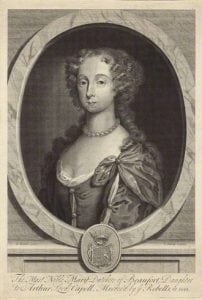John Chamberlayne to Hans Sloane – September 23, 1700
Item info
Date: September 23, 1700 Author: John Chamberlayne Recipient: Hans SloaneLibrary: British Library, London Manuscript: Sloane MS 4038 Folio: ff. 72-73
-
Language
English
-
Library
British Library, London
-
Categories
Medical, Scholarship, Scientific
-
Subjects
Charlatans, Dentistry, Fraud, Publishing, Teeth, Worms
-
Date (as written)
September 23, 1700
-
Standardised date
-
Origin (as written)
Petty France, Westminster
-
Others mentioned
Mr Upton
-
Patients mentioned
Original Page

Transcription
Chamberlayne asks Sloane to refrain from mentioning Upton’s worming of teeth until it can be ascertained that Upton used no sleight of hand. Though he has worked on many gentlemen, Chamberlayne included, Chamberlayne believes they may have been had and does not wish to harm his credibility by having this account disseminated with his name attached. John Chamberlayne was a translator and editor specializing in modern languages which he studied at the University of Leiden. He translated works on many topics, was a fellow of the Royal Society, and published three works in the Philsophical Transactions (Reavley Gair, Chamberlayne, John (1668/91723), Oxford Dictionary of National Biography, Oxford University Press, 2004; online edn, Oct 2009 [http://www.oxforddnb.com/view/article/5060, accessed 30 May 2011]).
Patient Details
-
Patient info
Name: N/A
Gender:
Age: -
Description
-
Diagnosis
-
Treatment
Previous Treatment:
Ongoing Treatment:
Response: -
More information
-
Medical problem reference

